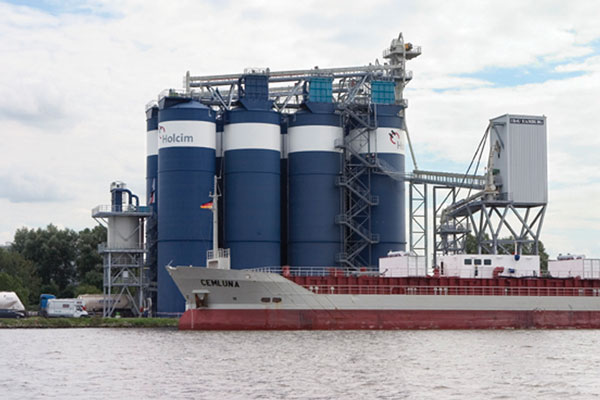Marine terminal options
Terminal concepts have changed greatly over the years and the complexity of projects has increased. Today, terminals are not only designed for a number of technologies but also with differing design options and contract terms. With customer-specific concepts increasing, turnkey solutions are more in demand, as it is virtually the only way that customers can guarantee their requirements are met. In this article IBAU Hamburg explores the various aspects of marine terminal planning using examples of some of its recent turnkey projects in Sweden, Malaysia and Singapore. By Martin Paterson, IBAU Hamburg, Germany.

Figure 1: Holcim marine cement terminal
Marine cement terminals (Figure 1) are essential for cross-border seaborne cement trade as well as for growth in cement distribution by oceangoing ships in domestic markets. Such terminals can be classified into three categories according to cement handling capacities:
• large terminals with throughputs in excess of 1Mta
• mid-size terminals with throughputs of between 0.1-1Mta
• small terminals with throughputs below 0.1Mta.
The larger the terminals are, the bigger the cement vessels that supply them and the higher the required throughput rates of the cement-handling equipment. Higher rates lead to shorter turnaround times and thus reduced charter costs for ships.

